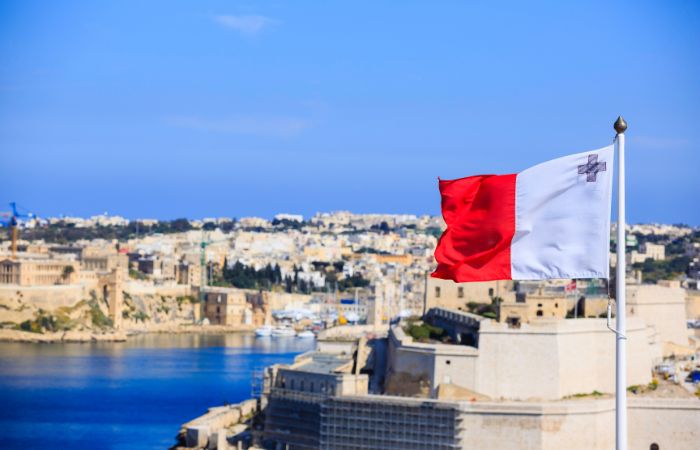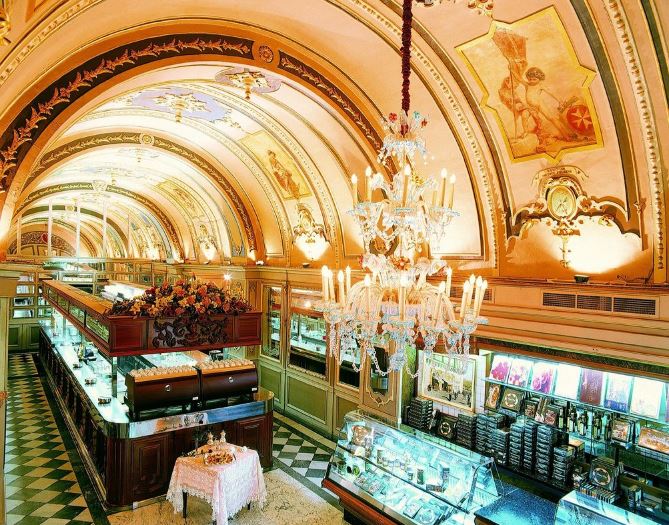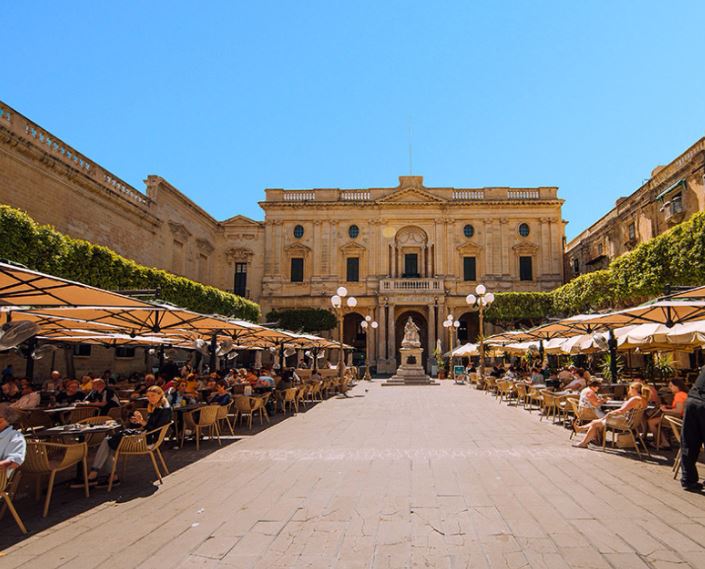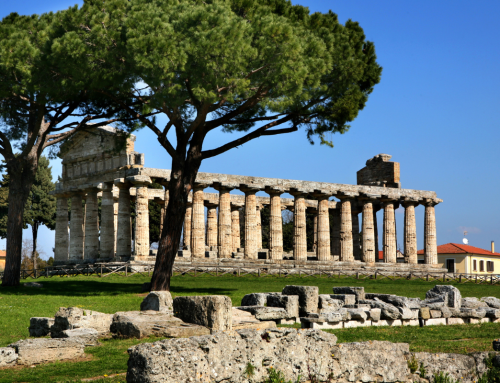Malta, an island located in the heart of the Mediterranean Sea between Sicily and the North African coast, is renowned for its historical sites that narrate the story of the peoples who have succeeded one another on the island, such as the Romans, Moors, Knights of St. John, French, and, more recently, the British.
For those traveling to Malta, the island, in fact, is an archipelago worth visiting. It is filled with fortresses, megalithic temples, and beauties such as the Ħal Saflieni Hypogeum, an underground site of halls and mortuary chambers dating back to 4000 BC.
Malta has been at the center of Mediterranean history and culture for centuries, and there is no better way to understand this than by starting your visit from the capital city, Valletta.
At night, Valletta is a true melting pot of young people from all nationalities, who flood the streets, bringing a breath of life and joy. The streets come alive after sunset to the sound of live music and the buzz of patrons. The grid-like system of streets and alleys, used by the Knights of St. John to build the city, is filled with people and literally swarms like an ant colony.
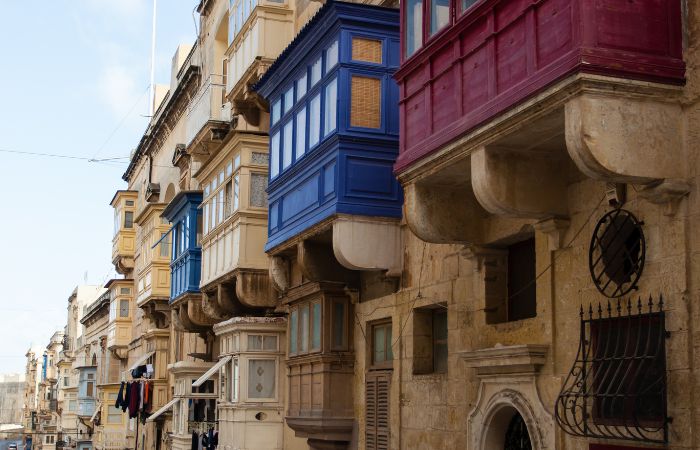
Straight Street “The Gut”
Republic Street is the main thoroughfare, filled with cute cafes and restaurants; Merchant Street is less chaotic and leads to the covered market; while Straight Street will transport you back in time when British sailors and airmen frequented it. If you follow the ancient road signs of the time, you will reach the bars of The Gut, once the red-light district of Valletta, where the ladies of the night would lure drunk sailors and airmen outside their doors.
It was the destination of thousands of British airmen stationed on the island, and Royal Navy ships used to stop here.
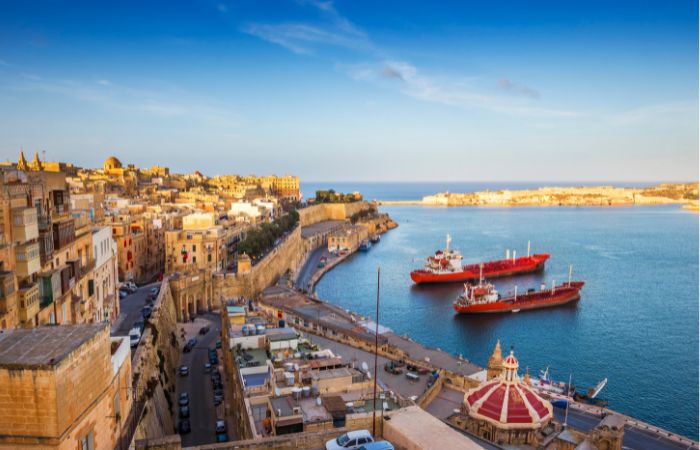
Festival season is in full swing in Malta, especially during the summer months. Make sure to check the island’s tourism website for the latest event listings.
Some of the annual festivals that draw crowds include the Strawberry Festival, Notte Bianca in La Valletta, the Karnival ta’ Malta, the Malta Jazz Festival, the Baroque Festival in La Valletta, the Farsons Beer Festival, the Delicata Wine Festival, the Fireworks Festival, and the Three Palaces Festival.
One standout event is the BirguFest, with its highlight being the Candlelight Birgu. One of Malta’s oldest cities, Birgu (also known as Vittoriosa) is transformed into a romantic and mystical wonderland, with thousands of candles illuminating its medieval homes and winding alleyways. Visitors can expect historical reenactments, open museums and churches, exhibitions, and installations, along with concerts, theater, and laser shows.
Malta is steeped in history, from the ancient cities of Medina and La Valletta to the megalithic temples of Hagar Qim, Mnajdra, and the Hypogeum, as well as the ornate facades of traditional Maltese townhouses. Limestone has played a pivotal role in preserving the island’s rich history. At the Limestone Heritage Park and Gardens in the village of Siggiewi, visitors can learn about the use and significance of this natural resource over the centuries. They can even try their hand at stone carving and sculpting to create their own souvenirs.
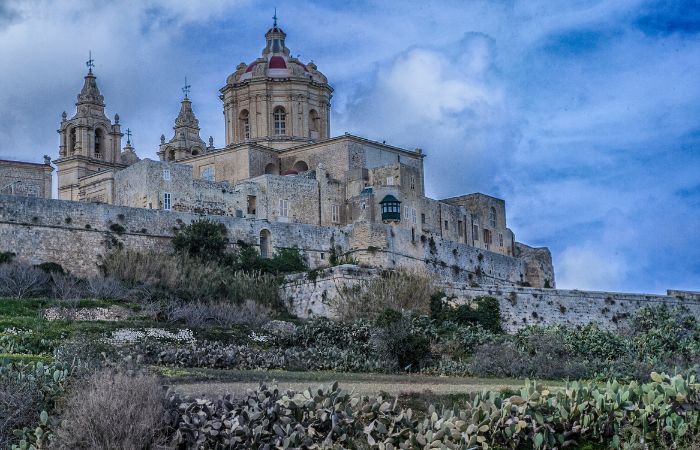
Medina
After creating their own masterpiece, visitors can indulge in a farmer’s lunch in the tranquil gardens of the estate, which is an excellent way to sample the local Maltese cheese (gbejna), homemade pasta, rabbit dishes, and traditional sweets. The park also features a historic zoo for younger visitors to enjoy.

Gbejna
Another must-visit attraction is Casa Rocca Piccola in La Valletta, which is a beautifully restored nobleman’s house. The house is home to original artwork, antique furnishings, and a vast collection of artifacts that showcase Malta’s rich cultural heritage.
Not your typical museum, but instead the only privately owned palace open to the public in Valletta. It showcases unique furniture, memorabilia, family portraits, and rare medical instruments from the Sacra Infermeria of the Knights of St. John in Valletta. During the day it functions as a museum and at night it serves as a stately residence, where its rooms bring to life the history of the Hospitaller Knights and Maltese nobility. The palace was built in the 16th century for Don Pietro La Rocca, an admiral of the knights and is the ancestral home of the family of Marchese Nicola de Piro. Today, it also houses a boutique B&B, with a tranquil garden and a cheerful macaw parrot named Kiku.
Tourist groups sometimes get the chance to be personally guided by the Marchese himself. Regularly scheduled tours are also organized throughout the week.
Caffè Cordina, Valletta
This is the most beautiful café in Valletta and a sort of institution. You can’t miss the chance to grab an espresso and one of their typical pastries. Take a few minutes to relax in the sun at Piazza Regina, in front of the statue commemorating Queen Victoria’s golden jubilee and the National Library.
The café was founded in Cospicua in 1837 and moved to Valletta in 1944. The building, known as the Casa del Commun Tesoro during the government of the Order of St. John in Malta, was later used by the British as an office and then transformed into the Grand Hotel. The eclectic interior décor of the café and the vaulted ceiling adorned with paintings by Maltese painter Giuseppe Cali make it a unique place.
Meridiana Wine Estate, Wine Tour and Tasting
30 years ago, the idea of producing internationally recognized wines in Malta seemed like a pipe dream. Some considered it a risky investment, thinking it was destined for failure from the start.
However, today this decision is viewed as courageous, as it gave birth to the Ta’Qali wine estate, near Medina. Built in 1994 on the former site of an airfield used by the RAF during World War II, it utilizes a British-built herringbone irrigation system.
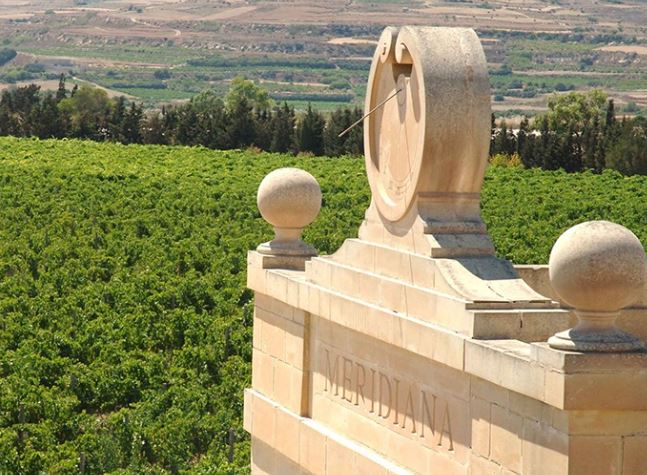
Success was achieved with the first harvest in 1996, which Meridiana sold out in just a few weeks. Their wines are now established internationally. Among the Maltese wines are merlot, cabernet sauvignon, and moscato. Wine tasting takes place on the panoramic terrace of the estate overlooking its vineyard or in the courtyard near the cellars. A tour includes a visit to the fermentation room and underground cellar, both housed within the picturesque Maltese farmstead.
Taste of History at the Maritime Museum of Malta, Birgu
The Maritime Museum of Malta in Birgu is offering visitors a unique dining experience. Steeped in history, the atmosphere is special, and the menu is unlike any other. Historians and chefs have scoured 18th-century documents to replicate the culinary habits of the Knights of St. John.
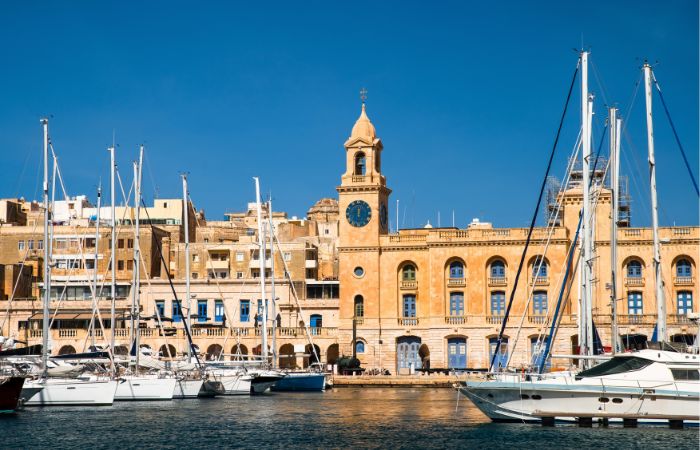
Local Maltese fruits and vegetables are sourced from nearby farmers, while sausages are made by the local butcher using traditional methods. The in-house chefs follow authentic recipes, making this a truly immersive culinary experience. Housed in an ex-British bakery from the Birgu period, one of the three cities just beyond the Grand Harbour from Valletta, this dining experience is one not to be missed.
Lascaris War Rooms
Under the fortifications of Malta’s capital, Valletta, lies a complex of tunnels and chambers that guard the fascinating secrets of World War II. Built by the British Army, the war rooms housed the Allied War Headquarters, which played a crucial role in the island’s defense and coordinated Operation Husky, the invasion of Sicily.
Named after Giovanni Paolo Lascaris, a Grand Master of the Knights of Malta in the 17th century, who built a garden on the site and fortifications around the island, the war rooms received communications from all radar stations and mapped the movements of aircraft and ships around the islands.
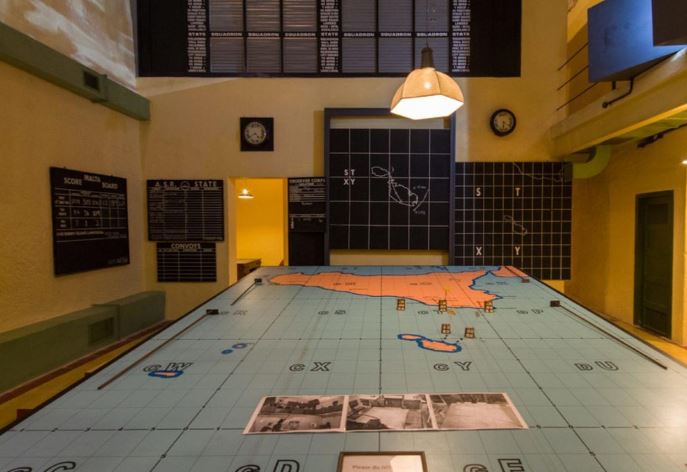
After the war, the Lascaris Rooms were used as the headquarters of the Royal Navy’s Mediterranean fleet. Climbing the bastion’s stairs leads to the Upper Barrakka Gardens for a spectacular view of the Grand Harbour.
National Museum of Community Art (MUZA), Valletta
Listed by Guardian Travel as one of 13 new European museums not to be missed, the MUZA opened in 2018, in a building that was once the home of the Italian Knights of the Order of St. John.
The site offers the opportunity to explore an auberge where the knights lived during their stay on the island. The grand baroque entrance, courtyard, main staircase, and halls have been reconstructed using contemporary materials to display intriguing elements of late 16th-century architecture.
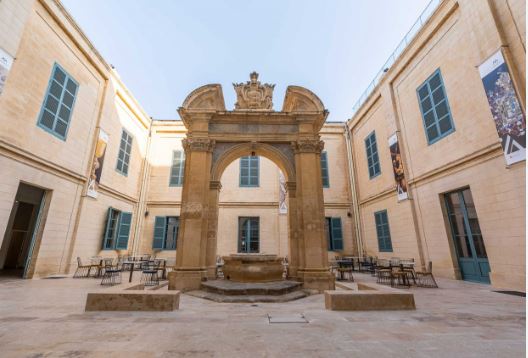
As a museum of national community, one of its missions is to make art accessible to the public. MUZA achieves this by presenting contrasting works of art by both ancient and contemporary masters. The Capolavori a Muza exhibition displays 13 ancient masterpieces from a private collection, including paintings by Rubens, François Boucher, Leonardo da Vinci, and Giovanni Bellini.
Boat trips and spectacular views
One of the must-do activities in Malta is taking a water taxi service through the Grand Harbour from La Valletta to the Three Cities (Birgu, Senglea, and Cospicua) and back on a traditional dghajsa. These local boats were built in the 17th century specifically for this purpose. They were used to ferry passengers between the port cities and also to disembark passengers from arriving ships, making them the primary mode of transportation in the harbor areas.
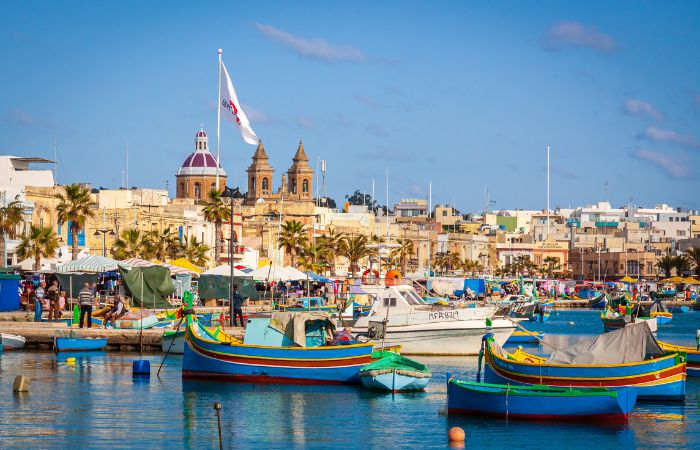
The 10-minute crossing costs only € 2, and tourists can also opt for a slightly longer harbor cruise. The real thrill is feeling the waves beneath you while taking in the imposing views of the fortifications of La Valletta, Fort St. Angelo, Fort Ricasoli, and admiring the grandeur of one of the largest natural ports in Europe.

